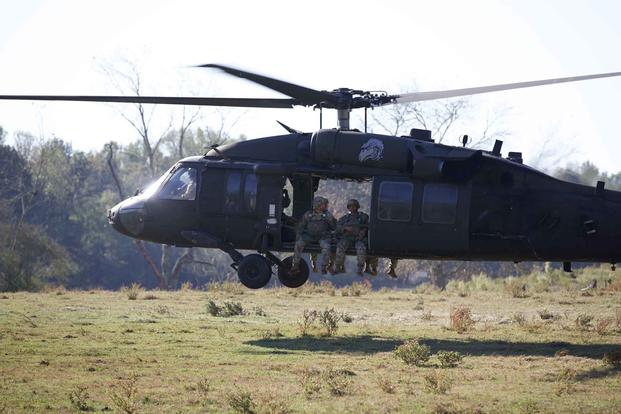Army aviation officials say that the current budget stalemate could delay a major step in the service's effort to develop a futuristic helicopter to replace the venerable UH-60 Black Hawk.
Officials with the service's Future Vertical Lift effort plan to release a request for proposal to invite defense companies to compete to build the Future Long Range Assault Aircraft (FLRAA) in fiscal 2021, Maj. Gen. Thomas Todd III, who runs Program Executive Officer Aviation, said at the Association of the United States Army's 2019 annual meeting.
But if the continuing budget resolution lawmakers passed in October is not resolved, Todd worries that the FLRAA effort will be significantly delayed.
Continuing resolutions cause headaches for new programs because they prevent the launch of competitive efforts that were not identified in the previous year's budget. The military services are currently held at 2019 spending levels.
Related: Special Ops May Get Army Future Vertical Lift Helo to Replace MH-6 Little Bird
If the CR continues, "it's going to be problematic for the whole Army and FLRAA will be one of the programs that it certainly delays," Todd said, describing how officials are depending on $75 million in 2020 dollars to ensure the program is ready to go into competition.
"We are expecting that to be resolved, so we are moving along as though we are going to have additional dollars for risk reduction in 2020," he said. "If we [get] that, I think we will be prepared to do what the vendors need to do to get ready for competition and for us to finalize the requirements and be ready."
The FVL effort is the service's third modernization priority. The program has prioritized building the Future Attack Reconnaissance Aircraft (FARA), an aircraft designed to penetrate enemy air-defense networks and open gaps that could be exploited by Future Long Range Assault Aircraft carrying ground forces to seize key terrain, Army officials say.
The FVL effort is intended to field aircraft capable of giving aviators greater range and speed, beginning in 2030.
The Army is preparing for a major milestone in March when it down-selects from the five competing firms -- that the service awarded $3.9 billion worth of contracts in April -- to two competitors that will compete in the final phase of the program.
The two competitors are scheduled to participate in a year-long fly-off beginning in November 2022. Brig. Gen. Walter Rugen described it as "very important" because it will ultimately decide which firm will make the new aircraft.
Rugen, director of the Army's Future Vertical Lift Cross Functional Team, said the last three months of the fly-off will be controlled by the service and involve Army pilots evaluating the performance of the two aircraft designs.
"Eventually, we will take control of the assets and do an Army-only assessment," he said.
-- Matthew Cox can be reached at matthew.cox@military.com.
Read more: Marine Scout Sniper Managed to Sneak Up on His Enemy Naked Except for a Pair of Boots













